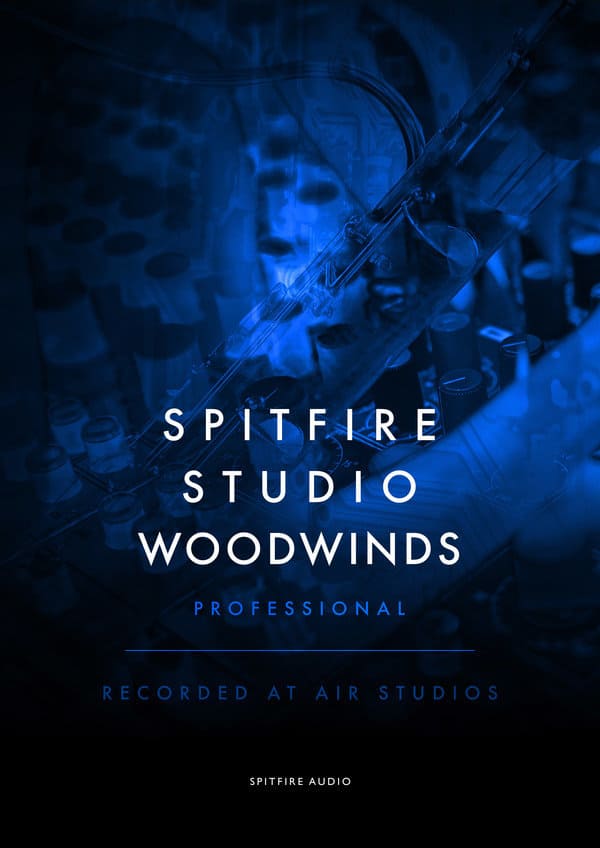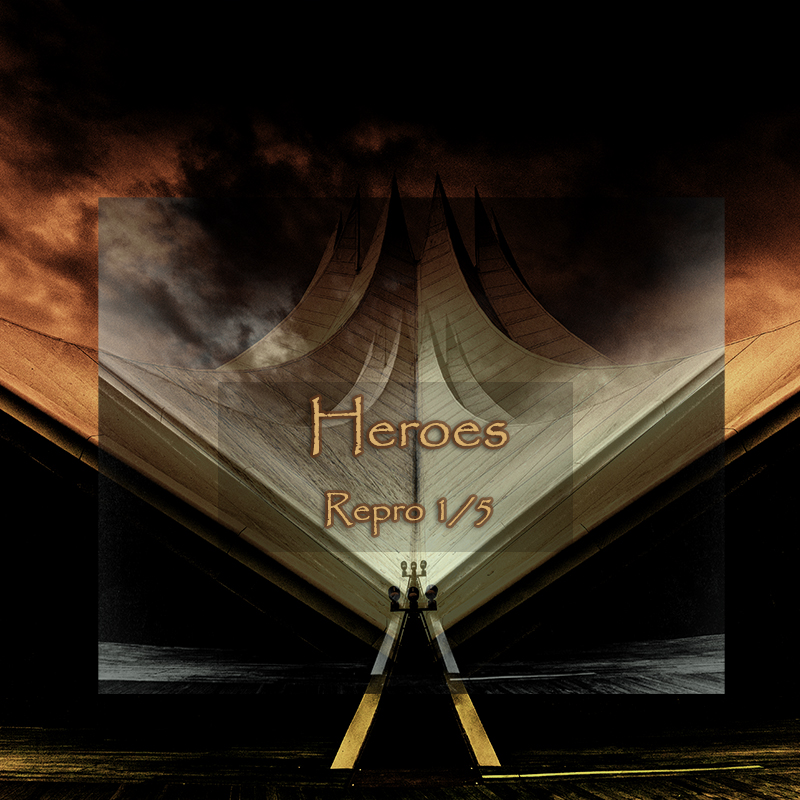Spitfire Studio Woodwinds Professional by Spitfire Audio Review
Today we are taking a look at our review at Spitfire Studio Woodwinds Professional by Spitfire Audio. Spitfire Audio has been producing excellent sample libraries since 2007. Spitfire Audio is known for its film composer-ready orchestral instruments libraries.
Spitfire Audio has been raising to one of the top library makers in recent years among other industry-leading companies with a large range of sample libraries like 8Dio, Cinematic Studio, CineSample, E-instruments lab, Native Instruments, Orchestral Tools, and SoundIron.
And let’s not forget the more focused boutique producer like Cinematique instruments, Fluffy Audio, Gothic Instruments, Heavyocity, Hybrid Two, Impact Soundworks, MusicalSampling, Output, ProjectSam, SampleLogic, Soniccouture, Sonokinetic, Sound Dust, Strezov Sampling, and many more.
The complete Studio Series suits producers and composers, especially at this aggressive price point. Spitfire Studio Brass Professional, Spitfire Studio Strings Professional, and Spitfire Studio Woodwind Professional are as a combination a complete set, add percussion to have a small orchestra on hand. The three Studio Series libraries are known for their clear and crisp sound.
Recording in a dry studio space can provide a number of advantages for the engineer. For one, it can help to reduce reflections, which can cause problems with phase coherence.
In addition, a dry studio can help to control the acoustic environment, making it easier to achieve a consistent sound. However, some engineers find that recording in a dry studio can also lead to a loss of ambiance and uncleanness.
The new Studio Series from Spitfire Audio offers the best of both worlds, providing users with the dry, controlled sound of a studio environment while still offering the excitement of a fairly bright room. As a result, engineers can now have the best of both worlds when it comes to recording.
Spitfire Studio Woodwinds Professional – Installation

You use the download and install tool provided by Spitfire and register the downloaded libraries in Native Instruments Native Access using the provided serial. Kontakt or Kontakt Player 5.6.8 or higher is required.
After you have downloaded the Spitfire libraries, open Native Instruments Native Access and register the libraries. In order to use the Spitfire libraries, you will need Kontakt or Kontakt Player 5.6.8 or higher.
The Spitfire libraries require over 203 GB of space for installation and the library itself requires more than 102 GB of space. Once the library is installed, you can start using it in your music productions.

Spitfire Studio Woodwinds Professional – Sound
There are two versions available we are looking at Spitfire Studio Woodwinds Professional. A core version called Spitfire Studio Woodwinds is also available.
You can upgrade for pretty much the delta between the price of both libraries. Speaking of the best time to buy, look out for wish list sale or go for bundled products which the company calls collection.
I would recommend going for the professional version, you could start with the core version if it makes business sense to go that route.

Core and Pro Version compared
Spitfire Studio Woodwinds Professional edition gives you instant results with 143 articulations across 11 instruments. You’ll have everything you need to get the perfect sound for your music, from the dazzling piccolo to the underbelly of the section with contrabassoon, contrabass clarinet, and bass flute.
Spitfire Studio Woodwinds Professional edition gives you extensive control of the sound, with the inclusion of two ready-to-go mixes, two close-mic arrangements, two Decca tree setups, ambient, and outriggers.
You can access and personalize your own mix of Simon’s microphone armory — from pin-sharp to super-wide, picked up by the best from Neumann, Schoeps, and Sennheiser. This peerless detail and control extend to the articulations, which fulfill all the traditional requirements, but include extended techniques such as multi tongue, air, and key FX, staccatissimo, and swells.
Whether you’re looking for a natural sound or something more experimental, Spitfire Studio Woodwinds Professional edition provides everything you need to create memorable tracks. The Professional edition offers you all of this and more, giving you 15 instruments to choose from.
| Spitfire Studio WoodwindsSpitfire Studio Woodwinds Professional11 Instruments with 143 articulations 7 Solo instruments Tree 1 | 15 Instruments with 260 articulations 11 Solo instruments Close 1, Close 2, Tree 1, Tree 2, Ambients, Outriggers, Mix 1 and 2 |

Spitfire Studio Woodwinds Professional – Recording Space
The library Spitfire Studio Woodwinds Professional was recorded in Studio One at Air. Spitfire did push over the last years the fact that their more symphonic libraries are recorded in Lyndhurst Hall. All their Symphonic range have been recorded in Lyndhurst Hall which comes with a rich and big tone.
The Spitfire Studio Series (Brass, Strings, and Wood) has been sampled in Studio One at Air which provides a sound that is drier and can be shaped easier plus it is a more focused and detailed sound. You get a so-called dry library as the room has very little reverberance.
This library recorded in Studio One is an excellent choice for a composer who is in need to have further control over the resulting aspects of the character and tone.
AIR Studio One is not completely dry, and does have a degree of reflection from its wood and glass structure, with these reflections being fairly present, if that’s what you want.
My preference, upon exploring the available upper palette of sounds, is now to work with more of a close-mic setting, with a hint of Decca Tree. This largely removes anything unwanted in my particular instance, while only loading two of the six mic-sample sets, and sounding pretty classy with it. Additionally, I’ve found that this setup allows for a more intimate and focused sound, which is particularly beneficial for smaller ensembles and solo sections. It really brings out the detail and nuance of each instrument, creating a more dynamic and expressive overall sound. And when combined with the shimmer shake strike by in session audio, the result is a truly captivating and rich sonic experience.
The room ambience can be captured by placing microphones at different points in the room to pick up different resonances. By adjusting the levels of each microphone, the engineer can create a desired sound for the recording.
Placing microphones closer to reflecting surfaces will produce a brighter sound, while further away will result in a darker sound. Recordings like this one in the famous AIR Studio One offers a variety of options for capturing ambience, making it a versatile space for recording.
Spitfire Studio Woodwinds Professional – Instruments
When you first open Spitfire’s Woodwinds library, you’re struck by the sheer number of instruments on offer – 15 in total. It’s immediately clear that this is a comprehensive and well-thought-out library, with a range of different woodwinds represented.
From the standard flutes, oboes, clarinets, and bassoons, to more unusual offerings like the alto flute, there’s something here for everyone. The recordings are of high quality, and the instruments have been captured in a way that captures their full range of expression.
In this woodwinds library, you have the choice between a wide range of instruments. The single instruments come with an extended range of articulation (compared to the core version) and what spitfire calls their extended techniques.
- Piccolo Flute
- Flute Solo
- Flutes a3
- Alto Flute
- Bass Flute
- Oboe Solo
- Oboes a3
- Cor Anglais
- Clarinet Solo
- Clarinets a3
- Bass Clarinet
- Contrabass Clarinet
- Bassoon Solo
- Bassoons a3
- Contrabassoon
Overall 15 instruments were recorded for this woods library with some instruments that you do not find in other libraries. The included articulation is very consistent, as long as the instruments to support the special articulation.
The samples are wonderfully sensitive to expression control (use a controller for that) and extremely playable for lifelike lines.
Recorded microphones are a so-called Easy-Mix: you can control a Closer or Far away tone. You also get two stereo mixes: one direct, one spatial, or six microphone signals plus Close 1 & 2, Tree 1 & 2, Ambient, and Outrigger.
One main benefit of the higher-priced version (Spitfire Studio Woodwinds Professional) is the flexibility and additionally recorded mics.. The resulting sound and their differences are audible. It helps you to create easier more emotion with a flexible setup driven by the mics you can use.
Superb Stereo Mixes
Simon Rhodes is a sound engineer who has worked on a number of film and television projects. He is also the man behind the Spitfire Studio Woodwinds Professional library.
In this library, Simon has assembled a number of excellently crafted stereo mixes. Each mix has been carefully crafted to provide the listener with a full range of control over individual microphone levels.
This gives the user a great deal of flexibility when it comes to mixing the tracks. The two close mics, two tree mic sets, ambient and outrigger mic’ing patterns all add up to create a very powerful and effective tool for anyone who wants to create their own music.
Combining Symphonic and Studio Versions
f you do have access to Symphonic Woodwind Libraries you should look into combining a Symphonic version with the studio version.
A Symphonic Woodwind library would give you that ambient, lush, loose, symphonic, epic, filming, and cinematic sound. The studio library is intimate, private, and dry.
You may think TV, producing music, and ads are a good fit for Studio Libraries and a Symphonic library for epicness. The studio version is more defined and combines that with the more epic libraries. The result could be an epic score with some detailed voicing, just add some reverb, compression, and mastering effect tools.
User interface & Usability
The UI is a classical Spitfire Audio interface and is in line with their other products released for some years.
Now with Kontakt 6 and larger screen real estate, I would like to see Spitfire upgrade their look and feel, and as with their non-Kontakt libraries provide a UI that is just larger and offers more information which comes with easier to read for many as well.
These days the UI used on common high res screens is extremely small. Any composer who owns another Spitfire library will find their way around rather quickly.

The articulation window is fairly clear, despite the small size. The layout of the library window is, as is unfortunately usual with Spitfire, extremely small. In addition to the articulations, which are displayed graphically, there are also the usual controls for dynamics, vibrato, release, tightness, and expression.
There is also a fader that can be used to switch continuously between different microphone positions from far to close. The controls are easy to use and self-explanatory. The only problem is that the interface is so small that it’s difficult to see what’s going on.
The screwdriver icon at the top left is a powerful tool that allows users to control multiple aspects of their audio experience.
With it, users can mix individual microphone signals, edit stereo width and panning, select velocity curves, and choose between articulation presets. Additionally, the screwdriver provides users with the ability to control round-robin behavior.
This refers to both the number of round robins available and the possibility of playing 2 round robin samples simultaneously in different ways.
Spitfire Studio Woodwinds Professional Ostinatum
With the included Ostinatum feature you can create rhythmic patterns. Results are best with short articulations. It is all very tiny (see above) and you can think about it as a mixture between a limited sequencer and arpeggiator. The design asks for a tutorial video on how to use it.
You can use the Ostinatum either as a surprise bag of inspiration or to specific design patterns. For example, you could create a simple four-beat pattern using quarter notes and eighth notes. Or, you could create a more complex pattern using a variety of different note values.
The new Ostinatum in Spitfire’s toolkit is something I’m really excited about. With it, you can create up to eight different patterns, between which you can switch.
Functionally not unlike an arpeggiator, the Ostinatum isn’t an entirely new idea, but if Spitfire is including it in their repertoire, it’s probably because it creates novel effects and unheard-of soundscapes. And with this hope in the back of my mind, I am excited and looking forward to the practical part. Let’s see how easy it is to set up and how effective it can be in sound design.
Setting up an Ostinatum is pretty straightforward. You choose a pattern, set the tempo, and select the range of notes you want to cycle through. You can also add swing and humanize the timing for more organic results. The real fun starts when you begin experimenting with the eight different patterns.
Each one produces a unique effect, so it’s definitely worth taking the time to explore all the possibilities. And once you find a sound you like, you can save it as a preset for future use.
Overall, I’m really impressed with Spitfire’s new Ostinatum. It’s easy to use and the possibilities are endless! The Ostinatum is a great way to add interest and variety to your music. So don’t be afraid to experiment with it!
Conclusion
Spitfire Studio Woodwinds features 11 essential instrument patches with 143 articulations to choose from, all available with the default Decca Tree microphone position. With Professional, you have access to 4 more unique instruments, 260 articulations, as well as seven extra unique microphone positions and two stereo mixes.
Spitfire Studio Woodwinds is a comprehensive collection of woodwind instruments that captures the essence of each instrument. The instruments have been recorded in high quality and are perfect for any music genre.
With so many articulations and microphone positions available, you are sure to find the perfect sound for your music. Spitfire Studio Woodwinds is the perfect tool for any musician who wants to create realistic and lifelike woodwind parts.
Rating: Five out of five stars
Spitfire Studio Woodwinds Professional is a comprehensive library for woodwinds. It has a uniquely extensive range of articulations, recorded mics, and instruments. The move to record this kind of focused tone library in a studio instead of Air is a logical move for such a library with a smaller size and different use. Y
ou have much more control over the resulting tone and vibe with the dry space. Magnanimous pro points are the range of uniform articulations across 15 woodwind instruments. Great Value for the money spend.










